How To Be Happy?
Happiness Is A Choice

How To Be Happy? There are 2 types of happiness. There is the
happiness that we feel in response to an external event or circumstance.
An obvious example of this would be our reaction to winning the
lottery!
Then there is the happiness that is cultivated
internally. This is the energy that arises as a conscious choice rather
than the more ephemeral reaction to a piece of good news.
In this article we are going to focus on happiness as a choice.
How To Be Happy - And How Things Are
We all struggle and strive to attain health, wealth and personal
happiness. Yet these three big areas: our health, our wealth and our
relationships are where we all get hung out to dry – sooner or later.
It is as though there is an inbuilt design flaw that ensures that we all suffer at some point - one way or another.
In the Buddhist perspective, "seeing things as they are" (Sanskrit yatha-bhutam darshanam) basically means to see that all human experience is stamped by three characteristics:
* Impermanence (anitya)
* No-self (anatman)
* Suffering (duhkha)
This is how things are.
As
we become aware of these characteristics our point of focus shifts away
from the content of our experiences and toward our response to them.
At time of writing in the middle of the Covid-19 lockdown this is a very pertinent point!
However, as Thich Nhat Hanh writes in “Being Peace”:
“…life is filled with suffering, but it is also filled with many wonders, like the blue sky, the sunshine, the eyes of a baby.
To
suffer is not enough. We must also be in touch with the wonders of
life. They are within us and all around us, everywhere, any time."
Zen teacher Alan Senauke offers the following advice for keeping your Joyful Mind when fear and suffering threaten it:
“Joy is an active principle, not a swamp of passivity. No one can steal it…
We have choices even though they are often hard to see.”
How To Be Happy - Choose To Be Happy
In the bible (Philippians 4:4 NKJV), the psalmist writes:
”This is the day the Lord has made; we will rejoice and be glad in it”
He doesn’t say “yesterday was a good day so let’s give thanks for that” or “tomorrow will be a good day so I’ll scrape through today and hang on for tomorrow”
He says today... now... this present moment... we choose to give thanks for this day.
When we complain it is often self-focused – about our current experiences and what I want or don’t want.
Happiness
is a choice and it comes to those who look beyond themselves to
something greater than their own immediate personal happiness based on
their circumstances.
The apostle Paul was frequently imprisoned and on one occasion when he was incarcerated with no prospect of release he wrote:
”Rejoice in the Lord always…always be joyful…”
His joy was grounded in his focus and was not a reflection of his circumstances.
How To Be Happy – A View From The End
In 2015, the award-winning journalist John Leland (on assignment from
“The New York Times”) spent time with number of older people with the
initial expectation of learning about how they cope with the effects of
aging in terms of physical and mental health and overall quality of
life.
However what he found was quite extraordinary, despite
their circumstances these people lived positive and joyful lives. He
captured and expressed his experiences in Happiness Is a Choice You Make: Lessons from a Year Among the Oldest Old:
”Older
people consistently reported just as many positive emotions as the
younger participants, but had fewer negative ones. They also had more
mixed emotions, meaning that they didn’t let frustration or anxiety keep
them from saying they were happy.
Consciously or unconsciously, they were making the choice to be happy even when there were reasons to feel otherwise…
Using
functional magnetic resonance imaging, or fMRI, the researchers found
that the emotional processing center of older people’s brains, the
amygdala, fired more actively when they looked at positive images than
negative ones; younger brains reacted to both equally.
In this, older brains resemble the brains of people who meditate.”
Leland
offers a compelling explanation from the psychologist Laura L.
Carstensen, founding director of the Stanford Center on Longevity:
”Her hypothesis, which she gave the wonky name ‘socioemotional selectivity,’ is that older people, knowing they face a limited time in front of them, focus their energies on things that give them pleasure in the moment, whereas young people, with long horizons, seek out new experiences or knowledge that may or may not pay off down the line.
Our default position is that we’d be “happy if only” every bad thing went away. Whereas, these old people accepted that there are always challenges in life and they choose to be “happy in spite of.”
How To Be Happy - The Cognitive Approach
In A Guide to the Good Life: The Ancient Art of Stoic Joy
William B. Irvine shares the wisdom of Stoic philosophy and reveals how
its insights and advice are refreshingly relevant to now.
In summary, here are 3 key takeaways:
1. “What’s The Worst That Could Happen?” - This is what the Stoics refer to as “the premeditation”
– which means that there’s a lot of value in thinking through
carefully, and consciously about the worst that could happen. In most
situations your thought process will show that your anxiety about those
situations are out of proportion or exaggerated
2. “Fake It To Make It” - Irvine refers to Seneca, who says that when we are angry we should take steps to “turn all (anger’s) indications into their opposites.”
We should force ourselves to relax our face, soften our voice, and slow
our pace of walking. If we do this, our internal state will soon come
to resemble our external state, and our anger, says Seneca, will have
dissipated.
3. “Make It A Treat” - The Stoics understood
that denying yourself something makes you appreciate what you would
otherwise take for granted, and they regularly undertook quite stringent
exercises in self-denial and over long periods of time.
Here are 5 Stoic Strategies To Create Happiness
How To be Happy - Be Grateful!
We have left the best and most powerful key to how to be happy to last.
Be grateful!
The practice of gratitude really does make us happy.
Not
only does gratitude make us happy there is considerable research that
shows that there are many physical, emotional and spiritual benefits
that we can enjoy from this practice.
As with most tools and resources featured on this site gratitude is a practice.
To make a start on how to be happy, all that is needed is a change in perspective.
You can feel it right now if you choose to.
Free Download: One Page Summary Sheet With Action Points & Resources
"Joy does not simply happen to us. We have to choose joy and keep choosing it every day." (Henri Nouwen)
Return to: Renewing Your Mind
LATEST ARTICLES
How to See Your Thoughts Without Becoming the Story
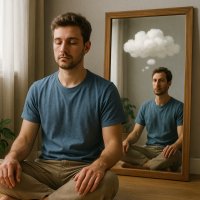 A Practical Guide to Thought-Awareness. You can spend your life inside the stories of your mind without ever learning how to see your thoughts clearly and objectively. Most of the stuff we tell oursel…
A Practical Guide to Thought-Awareness. You can spend your life inside the stories of your mind without ever learning how to see your thoughts clearly and objectively. Most of the stuff we tell oursel…The Collison Decision Matrix - A Simple Framework for Better Choices
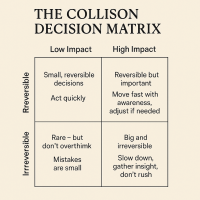 The Collison Decision Matrix Is A Practical Everyday Thinking Tool. Most of us spend a surprising amount of time worrying about decisions. From small ones such as what to wear, what to eat, what to te…
The Collison Decision Matrix Is A Practical Everyday Thinking Tool. Most of us spend a surprising amount of time worrying about decisions. From small ones such as what to wear, what to eat, what to te…The Power Of Asking The Right Question
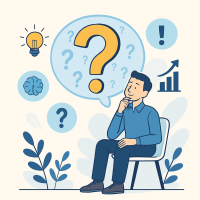 The Power Of Asking The Right Question Lies In The Quest For Insight. To experience the power of asking the right question you must develop the practice of asking questions. The best way to improve th…
The Power Of Asking The Right Question Lies In The Quest For Insight. To experience the power of asking the right question you must develop the practice of asking questions. The best way to improve th…Site Pathways
 Here is a site pathway to help new readers of Zen-Tools navigate the material on this site. Each pathway is based around one of the many key themes covered on this site and contain a 150 word introduc…
Here is a site pathway to help new readers of Zen-Tools navigate the material on this site. Each pathway is based around one of the many key themes covered on this site and contain a 150 word introduc…How To Live With Contradiction - Beyond Thought Let Stillness Speak
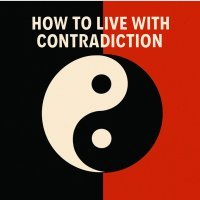 A major impact on so many peoples' lives is the situational contradiction of unfilled realistic expectations. So where does all this leave us? Well here we are, with mental equipment that is more lim…
A major impact on so many peoples' lives is the situational contradiction of unfilled realistic expectations. So where does all this leave us? Well here we are, with mental equipment that is more lim…How To Trust The Process Of Mindfulness - Right Now
 In mindfulness, the process isn’t some distant goal — it's what is happening right now. When we talk about how to trust the process of mindfulness the credibility of the process is heavily dependent…
In mindfulness, the process isn’t some distant goal — it's what is happening right now. When we talk about how to trust the process of mindfulness the credibility of the process is heavily dependent…Inner Mastery For Outer Impact - Mental Clarity For Effective Action
 Insights only matter if they translate into consistent action. In a world crowded with quick fixes and motivational soundbites, the theme “Inner Mastery for Outer Impact” calls us to something more e…
Insights only matter if they translate into consistent action. In a world crowded with quick fixes and motivational soundbites, the theme “Inner Mastery for Outer Impact” calls us to something more e…The Wise Advocate - Helping You Achieve The Very Best Outcome
 The focus of your attention in critical moments of choice either builds or restricts your capacity for achieving the best outcome. When we talk of 'The Wise Advocate' its easy to think of the consigl…
The focus of your attention in critical moments of choice either builds or restricts your capacity for achieving the best outcome. When we talk of 'The Wise Advocate' its easy to think of the consigl…Trust The Process - Beyond The Cliche
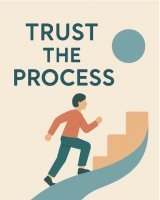 The phrase "trust the process" has become a cliche, the woo-woo mantra of the "self help" industry. Those three little words feel like they ought to mean something useful but hidden behind them are a…
The phrase "trust the process" has become a cliche, the woo-woo mantra of the "self help" industry. Those three little words feel like they ought to mean something useful but hidden behind them are a…The Dopamine Delusion - Why Anticipation Beats Achievement
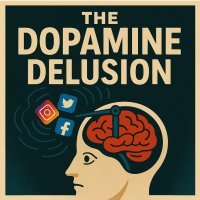 The thrill we feel is not in the having, but in the wanting. The more we have, the more we want. The more things we acquire and the easier things get for us, the more discontent we feel. The more spo…
The thrill we feel is not in the having, but in the wanting. The more we have, the more we want. The more things we acquire and the easier things get for us, the more discontent we feel. The more spo…The Power Of Silence Is Experienced In Your Use Of Language
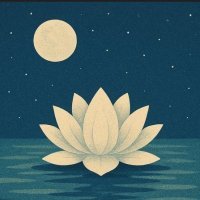 Practise the "Beneficial Neurological Delay" for optimal comprehension. The power of silence is experienced in your use of language, specifically: - How you formulate the words you use to think and in…
Practise the "Beneficial Neurological Delay" for optimal comprehension. The power of silence is experienced in your use of language, specifically: - How you formulate the words you use to think and in…Dealing With Setbacks - 5 Questions To Help You Face Discomfort
 How To Counter The Cognitive Shock Of A Setback. Setbacks challenge your instinctual desire for control and comfort, making it unnatural to respond with calm or acceptance. The reason for these instin…
How To Counter The Cognitive Shock Of A Setback. Setbacks challenge your instinctual desire for control and comfort, making it unnatural to respond with calm or acceptance. The reason for these instin…